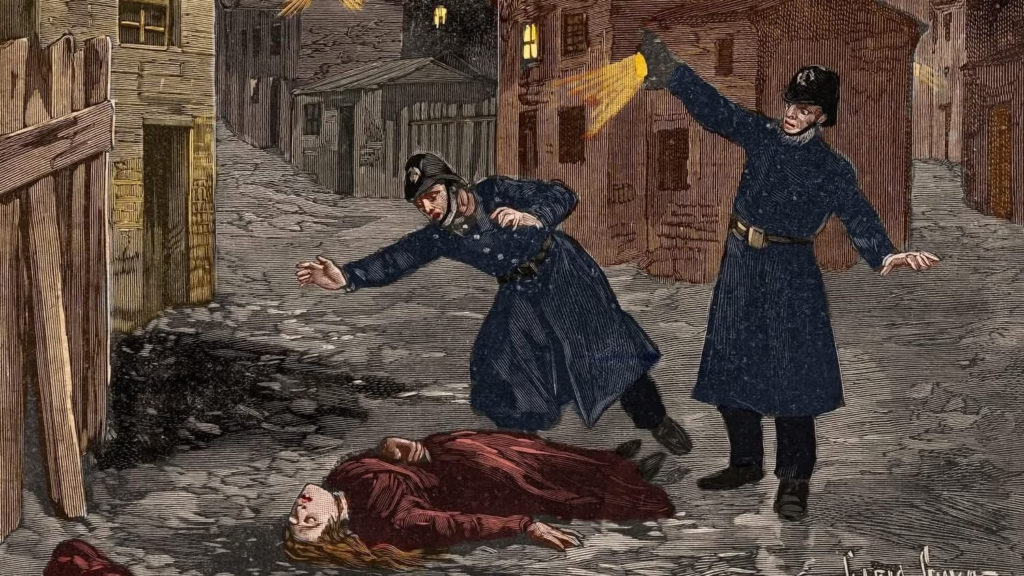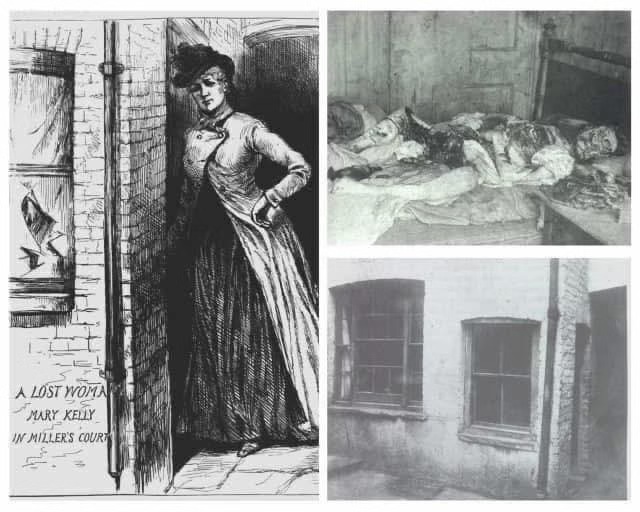There are some stories that never loosen their grip on the human imagination, and the tale of Jack the Ripper is one of them. Even people who know little about Victorian history recognise the name. Some have read the endless theories, others have watched the film From Hell. But the true story—stripped of Hollywood varnish and retold through the foggy streets of 1888 London—is far darker and more disturbing than any fiction.
A Killer in the Heart of Whitechapel
It was the late summer of 1888 when the terror began. Whitechapel, a cramped and poverty-stricken district of London, was already a place of hardship, overcrowded lodging houses, hunger, and nightly desperation. But nothing could have prepared the people who lived there for what was about to unfold.
A man dressed like a gentleman—always in black, wearing a top hat and long cloak—began stalking the streets in the dead of night. He moved like a shadow, blending with the smoke and grime of the East End. When the bodies started to appear, butchered in ways no one had witnessed before, whispers rose from the alleyways: the devil had come to London.
At first, journalists called him the Whitechapel Murderer. But the letters sent to police, taunting them with cruel humour and signed with a chilling flourish, changed everything. One letter bore the infamous signature: Jack the Ripper. Another arrived ominously titled “From Hell.”
A legend was born, and London would never be the same again.
Even Queen Victoria herself demanded action, ordering officials to hunt the monster down and “mitigate the evil.” But all her power meant nothing in the face of a killer who slipped through the city like smoke.


The Women Who Met the Ripper in the Dark
One by one, the women of Whitechapel—struggling for survival, working the streets for a few coins and a warm bed—crossed paths with the man who would ensure their names lived forever. They were invisible in life, dismissed because of their profession, yet in death they became iconic. The fear surrounding their murders spread through the city like wildfire. Each crime scene was more gruesome than the last, and the proximity of the killings made it clear that a single hand was behind them.
The murders shared disturbing similarities. Mutilations that suggested rage, ritual, or perhaps a twisted form of medical knowledge. Sometimes grapes—an expensive luxury in Victorian London—were found at the scenes, as if the killer had offered a rare treat to lure his victims closer.
The terror was relentless. And then, after the savage killing of Mary Jane Kelly, the violence simply… stopped.
As if the killer vanished into the night he had always belonged to.

Theories, Suspicions, and Endless Mysteries
When the murders ceased as suddenly as they began, the world demanded answers. How could such a violent spree end without a trace? London police interviewed more than two thousand people. Dozens were detained. Five were considered the most likely suspects, though none were ever fully proven guilty.
One theory insisted that a troubled schoolteacher named Montague Druitt drowned himself shortly after Kelly’s murder, taking the truth to the riverbed of the Thames. Another pointed to Carl Feigenbaum, a man later executed in America after confessing to mutilating women. Some believed the killer was Francis Craig, a reporter whose own wife had lived a double life under the name Mary Jane Kelly. Others accused the eccentric painter Walter Sickert, whose artwork was said to hide symbolic clues and whose DNA reportedly appeared on letters attributed to the Ripper.
But perhaps the most compelling suspect of all was Aaron Kosminski, a Polish barber living in Whitechapel. He was known to harbour violent hatred toward women and displayed clear mental instability. Years later, DNA found on a shawl claimed to belong to victim Catherine Eddowes seemed to point directly to him. Yet even that evidence sparked fierce debate among experts.
Through all these theories, one truth remains: Jack the Ripper was never officially caught. His identity is still a fog-shrouded mystery more than 130 years later.

The Legacy That Haunts London to This Day
Whitechapel has transformed since those brutal nights in 1888, but the echoes of fear never fully left. Tourists still wander the old cobbled streets at dusk, tracing the footsteps of both the victims and the killer who vanished without a trace. The graves of the murdered women—once dismissed, forgotten, buried in unmarked plots—now bear proper headstones. Finally acknowledged. Finally honoured.
The mystery endures because it taps into something primal: the horror of an unseen predator, the brutality hidden behind a gentleman’s silhouette, and the chilling possibility that evil can slip quietly through the cracks of a city and disappear without a sound.
Why did he stop? Did he die? Did he flee? Was he imprisoned for another crime? Or did madness finally consume him, locking him away like Kosminski until the end of his days?
No one knows. But one thing remains terrifyingly certain:
Jack the Ripper lives on in the shadows of history—an unsolved riddle, a lingering ghost, and a reminder that some nightmares never end.
Written by Lauren Campbell | Edited by Hauntic.com



